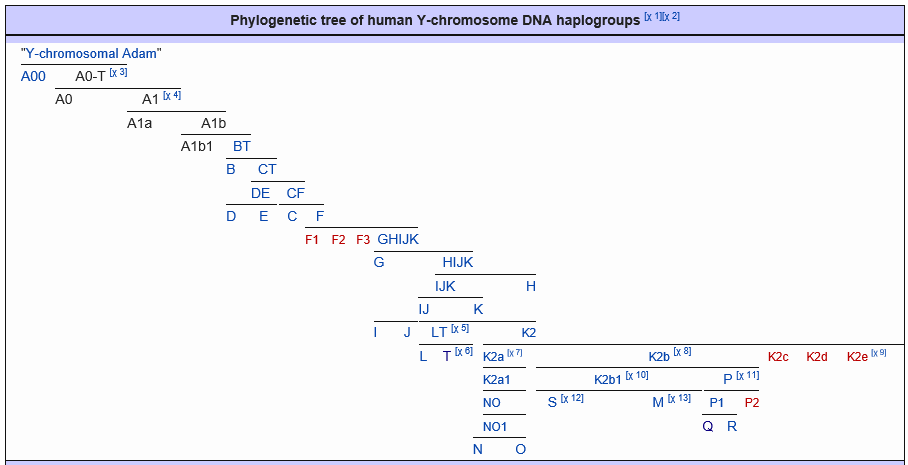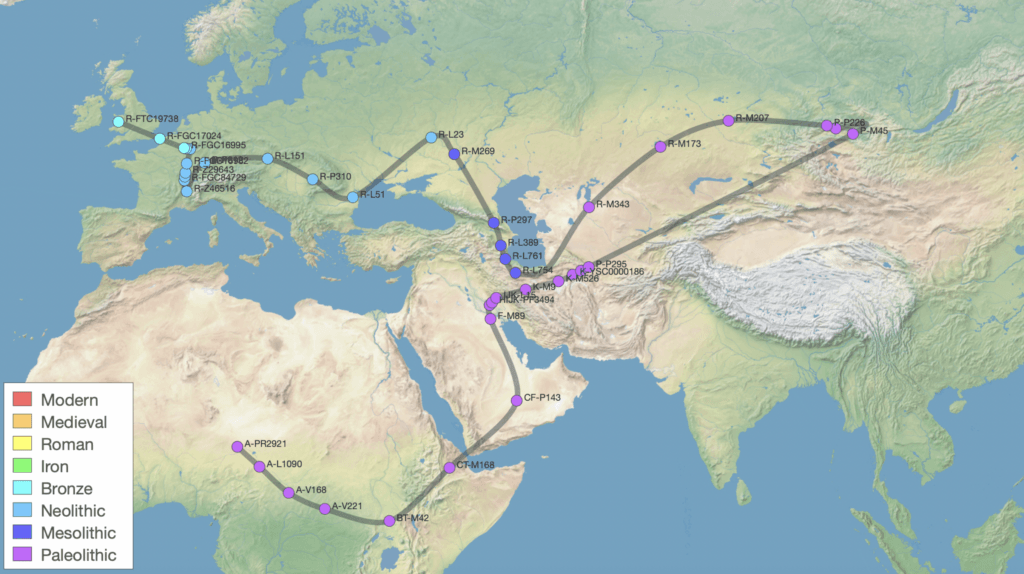History and Legacy
The Grist family has a rich history that extends back centuries, with well-documented roots since the 16th century and research tracing back its history much further. Our heritage reflects the dynamic changes that have shaped Britain and the broader world, showcasing the resilience and adaptability of the Grist lineage.

The Grist family’s DNA haplogroup is R>R1b>R-DF99, a lineage that provides fascinating insights into our ancient origins and migration patterns. The first man to have the DF99 marker is estimated to have lived around 2700 BC. He most likely lived within a few generations of the first man to have the P312 marker, making DF99 one of the oldest subclades of P312. All men who carry the DF99 marker are direct descendants of this ancient ancestor.
DF99, along with other subclades like L238 and DF19, appears to be less numerous than the larger P312 subclades of L21, U152, and DF27. The distinctive STR marker DYS 389-1, which is virtually universal in the DF99 subclade, suggests a unique genetic signature that has been remarkably stable over millennia.

There is compelling evidence that P312 men, including the ancestors of the Grists, rapidly spread through Europe from the Eurasian steppes during the Copper and Bronze Ages. This migration is likely connected with the Bell Beaker culture, which brought metalworking, Indo-European languages, horses, and wheeled vehicles to Europe. Unlike some of the larger P312 subclades, DF99 appears to have had a more eastern distribution, primarily found in Germany and England. This suggests that the DF99 subclade may have been concentrated among the Eastern Beakers, who remained distinct from the Western or Atlantic Beakers.
 The Grist family’s most recent DNA origins are traced to the subclade R-FTC19904, which emerged around 690 AD. This period coincides with significant migrations to Britain, possibly during the Anglo-Saxon migrations, Norman conquest, or other movements of peoples across Europe. The Grist family’s long-standing presence in Wessex, combined with our genetic markers, supports the hypothesis that our ancestors were among these early settlers.
The Grist family’s most recent DNA origins are traced to the subclade R-FTC19904, which emerged around 690 AD. This period coincides with significant migrations to Britain, possibly during the Anglo-Saxon migrations, Norman conquest, or other movements of peoples across Europe. The Grist family’s long-standing presence in Wessex, combined with our genetic markers, supports the hypothesis that our ancestors were among these early settlers.
There is relatively little information documenting the Grist Family during the Medieval period due to the scarcity of records being taken.
There is evidence around the 12th and 13th centuries of the introduction of the surname 'Gris' in the West and North of England, most likely relating to the herding of pigs, but these were families of separate origin.
At the turn of the 11th century, the Domesday Book (a survey of most of England and Wales) was completed. Amongst other items it listed a total of over 6000 water and animal powered mills throughout the country.
With the introduction of surnames between the 11th and 13th century, it is likely that the first ancestors to bear the name Grist were involved in the transportation of wheat to the mill at this time, a crucial occupation in medieval agrarian society.
Based on later records, we can pinpoint this original ancestor to have worked with mills in Wessex in the South of England around 1300 AD.
The Grist family of Hampshire traces their roots to the south coast, with records indicating their presence in the region since the 16th century. This dual presence in both Wiltshire and Hampshire highlights the spread and influence of the family across southern England. The family’s involvement in various trades and industries in these regions underscores their adaptability and entrepreneurial spirit.
The earliest recorded member of the Grist family in Wiltshire is believed to be Richard Grist, who was born in the village of Lacock in 1625. He married a woman named Ann, and they had several children, including a son named William, who was born in 1652. William Grist went on to become a successful farmer and landowner in Lacock. He married a woman named Mary, and they had at least four children together. One of their sons, also named William, was born in 1684 and went on to become a successful clothier. Over the centuries, the Grist family continued to live and work in Lacock, and many of them were involved in the wool and cloth trades. Some members of the family also served as constables, churchwardens, and overseers of the poor.
Richard Grist first appears in the Poor Rates List for Bradford for 1807. The previous occupant is shown as Benjamin Richardson, Cloth Worker, in Zachariah Shrapnel’s will of 1794. The Grists are a family of bakers originating from Lacock. They no doubt continued as bakers using the premises of Shrapnell House (7 St. Margarets Street) until 1819, when another baker, Richard Carpenter, took over the lease from the Shrapnells. The marriage license below shows him, aged 28, marrying Mary Briant, aged 24, in Bradford on Avon in 1774.
The 18th century saw the Grist family continue to expand their influence and diversify their occupations. The Industrial Revolution brought significant changes, and many Grists moved to burgeoning industrial towns seeking new opportunities. Records from this period indicate that the Grist family members were involved in the textile industry, a key sector of Britain’s industrial growth.
In the 19th and early 20th centuries, the Grist family of Wiltshire became involved in a wider range of professions and industries, including banking, brewing, and photography. The 19th century brought further diversification in the Grist family’s professional engagements. Many Grists entered professions such as banking, brewing, and photography.
The 20th century was a period of unprecedented change and challenge. World Wars, economic upheavals, and social transformations all left their mark on the Grist family. During this time, many Grists served in the armed forces, contributing to national and international efforts during both World Wars. The family adapted to the rapidly changing world by embracing new technologies and opportunities. Post-war, the Grist family continued to thrive, adapting to the rapidly changing world by embracing new technologies and opportunities.
Today, the Grist family is a vibrant and diverse group, with members engaged in various professions and communities across the globe. The legacy of resilience, adaptability, and commitment to family values remains strong. Our heritage is not just a record of the past but a living tradition that guides our present and future.
The Grist family is particularly proud of its contributions to various fields, including business, engineering, education, and the arts. We celebrate our heritage by preserving family records, sharing stories, and maintaining strong connections with both immediate and extended family members.
As we look to the future, the Grist family is committed to honoring our past while embracing new challenges and opportunities. By continuing to document our history and sharing it with future generations, we ensure that the legacy of the Grist family will endure for years to come.
From our early beginnings in Wessex to our present-day global presence, the Grist family has continuously adapted and thrived. Our history is a testament to the enduring spirit of the Grist name, reflecting a legacy of hard work, innovation, and community involvement. As we continue to uncover and document our family history, we celebrate the rich tapestry of our heritage and look forward to the future with pride and optimism.